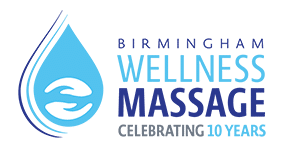Introduction to Swedish Massage
What is Swedish Massage used for? Swedish massage is one of the most popular and widely recognized forms of massage therapy. Originating in Sweden in the early 19th century, it was developed by Dr. Johan Georg Mezger, who incorporated techniques aimed at promoting relaxation and improving overall health. This massage style focuses on gentle, flowing strokes that enhance circulation and soothe tense muscles, making it an ideal choice for individuals seeking a serene and restorative experience.
The primary goal of Swedish massage is to promote relaxation and relieve tension throughout the body. By utilizing various techniques such as effleurage (long gliding strokes), petrissage (kneading), and friction, the therapist can effectively release muscle knots and stimulate blood flow. This holistic approach not only targets physical discomfort but also helps alleviate stress and anxiety, creating a sense of overall well-being.
Whether you’re new to massage therapy or a seasoned recipient, Swedish massage offers numerous benefits for both the body and mind. From reducing muscle soreness to improving flexibility and promoting better sleep, it’s a versatile therapy that caters to various needs. In the following sections, we’ll explore the specific uses and benefits of Swedish massage, highlighting why it’s a favorite among many clients.
Key Techniques of Swedish Massage
Effleurage is the foundation of Swedish massage, often performed on a massage table for optimal comfort and muscle relaxation.
This technique employs long, sweeping strokes that range from gentle to firm, depending on the client’s needs. Effleurage is designed to warm up the muscles, increase blood circulation, manage blood pressure, and prepare the body for deeper work. Remarkably, this initial contact fosters an immediate sense of comfort and relaxation within the recipient.
Petrissage follows, incorporating kneading actions.
By lifting and squeezing the muscles, petrissage helps to release tension and promote flexibility. These movements target deeper muscle layers, dissolving knots and adhesions.
Friction is a more focused technique – used for deeper penetration to break up scar tissue and adhesions and promote muscle drainage. This can stimulate both circulation and the nervous system, providing a revitalizing effect.
Finally, tapotement, consisting of percussive movements like tapping and chopping, serves to invigorate muscles and enhance circulation. These rhythmic chops and taps can either energize the body or assist in deep relaxation depending on their intensity, making this technique extraordinarily versatile. Empowered with these techniques, Swedish massage offers a dynamic and holistic approach to well-being.
Pain Management and Muscle Tension Relief
Swedish massage is a celebrated method for alleviating pain and reducing muscle tension, but many people wonder, what is Swedish massage used for beyond these benefits? By employing long, flowing strokes and gentle pressure, this technique is meticulously designed to target specific areas of concern, offering immediate relief and promoting long-term muscle health.
Numerous studies have shown the effectiveness of Swedish massage in managing chronic pain.
It excels in improving mobility, reducing discomfort, and enhancing the body’s natural function. By increasing blood circulation, Swedish massage facilitates the removal of metabolic waste, further aiding in muscle recovery and pain reduction.
This massage modality is particularly beneficial for individuals suffering from conditions such as arthritis, fibromyalgia, and tension headaches. By systematically addressing muscle knots and spasms, it significantly diminishes these ailments’ severity, offering a sanctuary of relief.
Overall, the disciplined application of Swedish massage stands as a cornerstone in the realm of pain management and muscle tension relief. Its comprehensive approach not only mitigates immediate discomfort but also fortifies the body’s resilience against future strain. Truly, it translates the art of touch into a powerful remedy for pain and tension, heralding a path to sustained wellness.
Improving Circulation and Flexibility
Swedish massage is instrumental in enhancing circulation and flexibility by targeting the muscles and tissues.
In 2016, numerous studies, including a detailed review, confirmed that regular Swedish massage sessions significantly improve blood flow. By stimulating the body’s circulatory system, this technique ensures oxygen and nutrients reach every part of the body efficiently.
Consequently, it’s no wonder that Swedish massage’s precision in applying pressure to the muscles induces a cascade of positive effects. These benefits include augmented tissue elasticity and sustained muscular flexibility, making it a favored choice among athletes.
Whether one is new to the world of massages or a seasoned enthusiast, embracing this time-honored technique is a proactive move towards better physical health. By mitigating stiffness and promoting relaxation, it amplifies overall mobility and supports enduring physical wellbeing.
In summary, Swedish massage does more than just relax; it significantly boosts circulation and flexibility, setting the stage for a more active and vital life.
Mental Health Benefits
Swedish massage can profoundly enhance mental well-being, offering a sanctuary of calm and relaxation, which translates to tremendous psychological advantages.
These benefits include a marked reduction in anxiety symptoms.
By fostering tranquility and diminishing muscle tension, mental calmness ensues.
Endorphin and serotonin levels, essential in managing mood, are positively influenced by massage therapy.
This elevation in mood-regulating chemicals can alleviate stress and encourage a more optimistic mental state, bolstering one’s capacity to handle daily challenges.
Ultimately, the art of Swedish massage encompasses more than physical relaxation; it is a pathway to mental rejuvenation, empowering individuals with enhanced emotional resilience.
How Often Should You Get a Swedish Massage?
The frequency of Swedish massages can vary depending on individual needs and preferences. For general relaxation and stress relief, many people find that once a month is beneficial. However, if you’re dealing with specific issues such as muscle tension or chronic pain, weekly or bi-weekly sessions may provide better results. It’s important to listen to your body and consult with your massage therapist to determine the best schedule for your wellness journey. Regular sessions can enhance overall well-being and help maintain a relaxed state.


